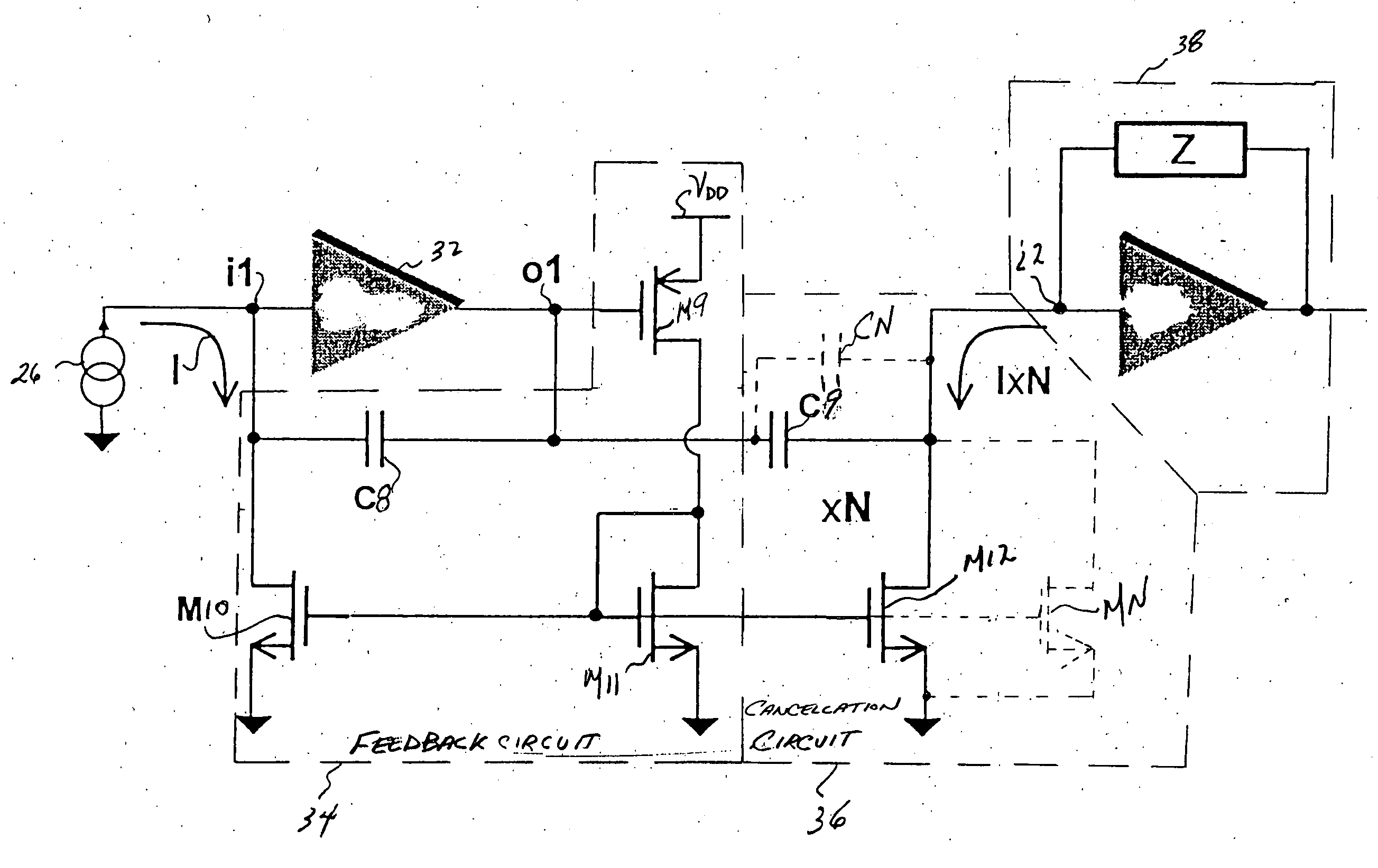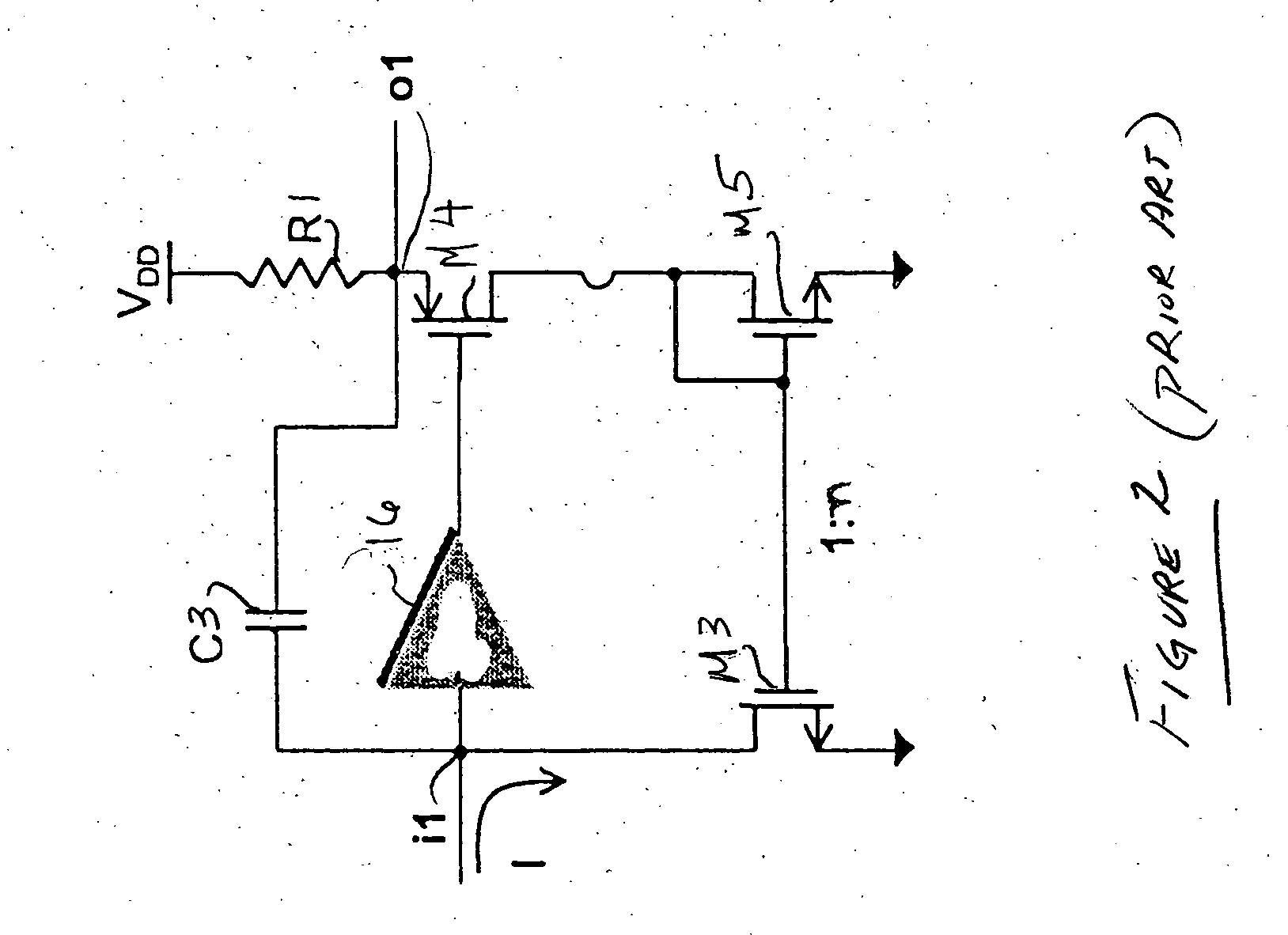Method and apparatus for linear low-frequency feedback in monolithic low-noise charge amplifiers
a low-noise charge amplifier and low-frequency feedback technology, applied in the direction of charge amplifiers, amplifier combinations, positive-feedback circuit arrangements, etc., can solve the problems of feedback instability, difficult to implement high-value resistors using conventional complimentary metal oxide semiconductor (cmos) fabrication methods, periods of inoperability, etc., to minimize the number of components and maximize the dynamic range
- Summary
- Abstract
- Description
- Claims
- Application Information
AI Technical Summary
Benefits of technology
Problems solved by technology
Method used
Image
Examples
Embodiment Construction
[0056]FIG. 6 shows a block diagram of a charge sensitive amplifier formed in accordance with the present invention, which includes an n-channel metal oxide semiconductor field effect transistor (MOSFET)-based signal amplifier 32 having an input terminal coupled to a current supply 26. A feedback circuit 34 is preferably coupled in parallel across the input and output terminals of the signal amplifier 32. A pole-zero cancellation circuit 36 is preferably coupled in series between the output terminal of the signal amplifier 32 and a second stage amplification circuit 38.
[0057]FIG. 7 shows a more detailed schematic representation of the charge sensitive amplifier shown in FIG. 6. For purposes of illustration, either n-channel MOSFETs or p-channel MOSFETs have been shown herein. However, it is to be understood that transistors of any type may be used, with modifications to the respective circuit that are well known in the art, while remaining within the scope of the present invention. ...
PUM
 Login to View More
Login to View More Abstract
Description
Claims
Application Information
 Login to View More
Login to View More - R&D
- Intellectual Property
- Life Sciences
- Materials
- Tech Scout
- Unparalleled Data Quality
- Higher Quality Content
- 60% Fewer Hallucinations
Browse by: Latest US Patents, China's latest patents, Technical Efficacy Thesaurus, Application Domain, Technology Topic, Popular Technical Reports.
© 2025 PatSnap. All rights reserved.Legal|Privacy policy|Modern Slavery Act Transparency Statement|Sitemap|About US| Contact US: help@patsnap.com



